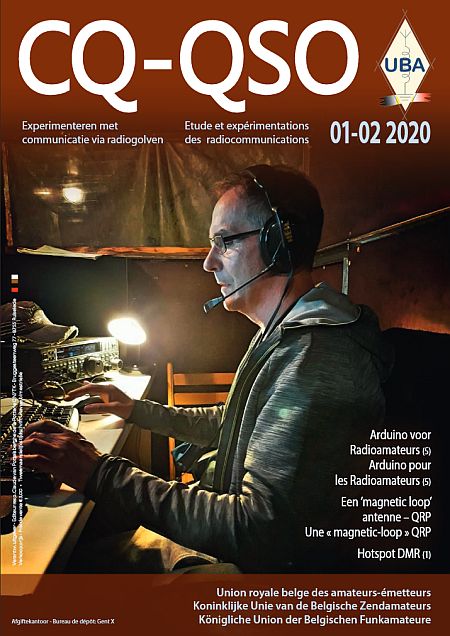
Actueel - Detail
eCQ-QSO 12/2019 est online
30-11-2019
Dans cette édition nous portons une attention particulière à : Le diplôme souvenir à l’occasion du dix-huitième anniversaire de la princesse héritière Élisabeth, UBA Contest du Printemps 2020, UBA PSK63 Prefix Contest 2020 et encore bien plus...
Vous trouverez le eCQ-QSO via la page d'accueil : cliquer à gauche sur CQ-QSO et ensuite sur le lien « supplément électronique du CQ-QSO ».
Avant cela il faut s'être enregistré sur le site web de l'UBA (login = call ou numéro ONL / mot de passe = numéro de membre ou votre mot de passe habituel).
Pour plus d'info, voir: Que devons-nous faire pour créer un nouveau compte UBA ?
Le prochain numéro du eCQ-QSO est prévu début février 2020. N'hésitez pas à envoyer votre article à la rédaction via CQ-QSO [at] uba [dot] be et l'équipe de rédaction fera le nécessaire.
Bonne lecture !
La rédaction.
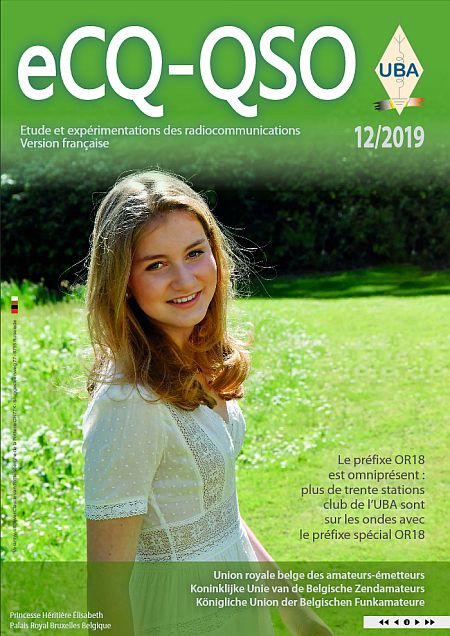
Vous trouverez le eCQ-QSO via la page d'accueil : cliquer à gauche sur CQ-QSO et ensuite sur le lien « supplément électronique du CQ-QSO ».
Avant cela il faut s'être enregistré sur le site web de l'UBA (login = call ou numéro ONL / mot de passe = numéro de membre ou votre mot de passe habituel).
Pour plus d'info, voir: Que devons-nous faire pour créer un nouveau compte UBA ?
Le prochain numéro du eCQ-QSO est prévu début février 2020. N'hésitez pas à envoyer votre article à la rédaction via CQ-QSO [at] uba [dot] be et l'équipe de rédaction fera le nécessaire.
Bonne lecture !
La rédaction.

Betaling vergunningen 2020
03-12-2019
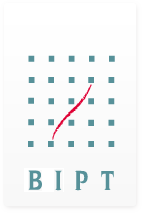 Het BIPT laat weten dat de facturen voor vergunningen van volgend jaar verstuurd zullen worden op donderdag 2 januari 2020.
Het BIPT laat weten dat de facturen voor vergunningen van volgend jaar verstuurd zullen worden op donderdag 2 januari 2020.
Er is vastgesteld dat enkele radioamateurs nu reeds ongevraagd betaald hebben.
Het BIPT vraagt met aandrang om met de betaling te wachten tot de factuur ontvangen is. Enkel dan kan uw betaling correct verwerkt worden. Bovendien wordt het bedrag jaarlijks aangepast aan de index, het bedrag voor 2020 zal bijgevolg niet hetzelfde zijn als wat u dit jaar betaald hebt.
 Het BIPT laat weten dat de facturen voor vergunningen van volgend jaar verstuurd zullen worden op donderdag 2 januari 2020.
Het BIPT laat weten dat de facturen voor vergunningen van volgend jaar verstuurd zullen worden op donderdag 2 januari 2020.Er is vastgesteld dat enkele radioamateurs nu reeds ongevraagd betaald hebben.
Het BIPT vraagt met aandrang om met de betaling te wachten tot de factuur ontvangen is. Enkel dan kan uw betaling correct verwerkt worden. Bovendien wordt het bedrag jaarlijks aangepast aan de index, het bedrag voor 2020 zal bijgevolg niet hetzelfde zijn als wat u dit jaar betaald hebt.
Paiement Licences 2020
03-12-2019
 L'IBPT nous signale que les factures pour les licences seront envoyées le jeudi 2 janvier 2020.
L'IBPT nous signale que les factures pour les licences seront envoyées le jeudi 2 janvier 2020.
Certains radioamateurs on déjà payé sans attendre la facture.
L'IBPT demande d'attendre celle-ci avant de payer pour que la transaction puisse être correctement traitée. De plus le montant est indexé annuellement - le montant que vous aurez à payer en 2020 n'est pas le même qu'en 2019.
 L'IBPT nous signale que les factures pour les licences seront envoyées le jeudi 2 janvier 2020.
L'IBPT nous signale que les factures pour les licences seront envoyées le jeudi 2 janvier 2020.Certains radioamateurs on déjà payé sans attendre la facture.
L'IBPT demande d'attendre celle-ci avant de payer pour que la transaction puisse être correctement traitée. De plus le montant est indexé annuellement - le montant que vous aurez à payer en 2020 n'est pas le même qu'en 2019.
OR18 activiteit op 80 meter
10-12-2019
 Aangezien het op de hogere HF-banden soms wat moeilijk is de diverse OR18 stations in de log te krijgen, heeft de HF-commissie een warme oproep gedaan aan alle operatoren om op 15 en 22 december extra actief te zijn in de 80m band.
Aangezien het op de hogere HF-banden soms wat moeilijk is de diverse OR18 stations in de log te krijgen, heeft de HF-commissie een warme oproep gedaan aan alle operatoren om op 15 en 22 december extra actief te zijn in de 80m band.
Het gaat telkens om een zondag wat de meesten allicht in de mogelijkheid zal stellen heel wat special event stations te werken.
 Aangezien het op de hogere HF-banden soms wat moeilijk is de diverse OR18 stations in de log te krijgen, heeft de HF-commissie een warme oproep gedaan aan alle operatoren om op 15 en 22 december extra actief te zijn in de 80m band.
Aangezien het op de hogere HF-banden soms wat moeilijk is de diverse OR18 stations in de log te krijgen, heeft de HF-commissie een warme oproep gedaan aan alle operatoren om op 15 en 22 december extra actief te zijn in de 80m band. Het gaat telkens om een zondag wat de meesten allicht in de mogelijkheid zal stellen heel wat special event stations te werken.
OR18 activité sur 80 meter
10-12-2019
 Comme il est parfois un peu difficile de contacter les différentes stations OR18 sur les bandes HF supérieures, le comité HF a lancé un appel chaleureux aux opérateurs de concentrer l’activité dans la bande 80m les 15 et 22 décembre. Etant des dimanches, ceci permettra pas mal de stations belges de contacter les stations OR18.
Comme il est parfois un peu difficile de contacter les différentes stations OR18 sur les bandes HF supérieures, le comité HF a lancé un appel chaleureux aux opérateurs de concentrer l’activité dans la bande 80m les 15 et 22 décembre. Etant des dimanches, ceci permettra pas mal de stations belges de contacter les stations OR18.
 Comme il est parfois un peu difficile de contacter les différentes stations OR18 sur les bandes HF supérieures, le comité HF a lancé un appel chaleureux aux opérateurs de concentrer l’activité dans la bande 80m les 15 et 22 décembre. Etant des dimanches, ceci permettra pas mal de stations belges de contacter les stations OR18.
Comme il est parfois un peu difficile de contacter les différentes stations OR18 sur les bandes HF supérieures, le comité HF a lancé un appel chaleureux aux opérateurs de concentrer l’activité dans la bande 80m les 15 et 22 décembre. Etant des dimanches, ceci permettra pas mal de stations belges de contacter les stations OR18.
ESA daagt radioamateurs uit: vind de OPS-SAT!
15-12-2019

OPS-SAT is de eerste satelliet in zijn soort. De satelliet beschikt onder andere over een zeer krachtige computer, een hoge resolutie camera, radioapparatuur en andere gespecialiseerde hulpmiddelen. Het meest bijzondere is echter dat de ESA de OPS-SAT ter beschikking stelt aan een ieder die zinvolle experimenten voorstelt en wil uitvoeren. Inmiddels zijn er al meer dan honderd gegadigden. Daaronder zijn start-ups, maar ook gerenommeerde ruimtevaartorganisaties uit Europa.
Enkele voorbeelden van ingeplande experimenten:
De lancering van de Soyuz-raket vanaf Kourou (Frans-Guyana) met de OPS-SAT aan boord staat gepland voor 17 december 8:54:30 UTC. Naar verwachting zal dan om 13:05:04 UTC de OPS-SAT in een baan om de aarde worden gebracht. Ongeveer 15 minuten later – nadat de UHF-antenne en de zonnepanelen in gebruik zijn genomen – begint de OPS-SAT met uitzenden van de telemetriedata. Naar verwachting zal dan de satelliet nog dezelfde avond tweemaal over Europa trekken.
Downlinkgegevens
Het OPS-SAT-team ontwikkelde speciale opensource-software waarmee iedereen het UHF-baken van de satelliet kan ontvangen en decoderen. Deze software bestaat uit een aantal GNU-Radio-applicaties die je op de volgende website kunt downloaden: grondstation OPS-SAT. Ook de documentatie van de software (Engelstalig) is daar te vinden.
Daarnaast heb je nog een programma nodig om de satelliet te tracken (volgen). Dat kan onder andere met Gpredict. Hiermee ga je na of de OPS-SAT zich binnen je ontvangstbereik bevindt. Het OPS-SAT-team heeft een voorlopige versie van een TLE-bestand beschikbaar gesteld om de OPS-SAT-gegevens bekend te maken binnen Gpredict: TLE-bestand.
Behalve de software is ook SDR-hardware nodig. De relatief goedkope RTL-SDR-dongle is daartoe al voldoende, maar andere door GNU-Radio ondersteunde SDR-hardware kan ook.

OPS-SAT is de eerste satelliet in zijn soort. De satelliet beschikt onder andere over een zeer krachtige computer, een hoge resolutie camera, radioapparatuur en andere gespecialiseerde hulpmiddelen. Het meest bijzondere is echter dat de ESA de OPS-SAT ter beschikking stelt aan een ieder die zinvolle experimenten voorstelt en wil uitvoeren. Inmiddels zijn er al meer dan honderd gegadigden. Daaronder zijn start-ups, maar ook gerenommeerde ruimtevaartorganisaties uit Europa.
Enkele voorbeelden van ingeplande experimenten:
- Het gebruik van neurale netwerken om opnamen van de aarde al aan boord van de OPS-SAT te analyseren in plaats van later op aarde. Dat bespaart veel tijd, waardoor bijvoorbeeld bosbranden sneller gedetecteerd zouden kunnen worden.
- Het gebruik van kunstmatige intelligentie om een ruimtemissie volledig automatisch te laten verlopen.
- Optische experimenten met het verzenden van data door gebruik te maken van laserlicht.
De lancering van de Soyuz-raket vanaf Kourou (Frans-Guyana) met de OPS-SAT aan boord staat gepland voor 17 december 8:54:30 UTC. Naar verwachting zal dan om 13:05:04 UTC de OPS-SAT in een baan om de aarde worden gebracht. Ongeveer 15 minuten later – nadat de UHF-antenne en de zonnepanelen in gebruik zijn genomen – begint de OPS-SAT met uitzenden van de telemetriedata. Naar verwachting zal dan de satelliet nog dezelfde avond tweemaal over Europa trekken.
Downlinkgegevens
- Baken-transceiver: GomSpace NanoCOM AX100
- Frequentie: 437,2 MHz
- Modulatie: GMSK
- Bandbreedte: 25 kHz
- Baudrate: 9600 bps
- Modulatie-index: 0,5
Het OPS-SAT-team ontwikkelde speciale opensource-software waarmee iedereen het UHF-baken van de satelliet kan ontvangen en decoderen. Deze software bestaat uit een aantal GNU-Radio-applicaties die je op de volgende website kunt downloaden: grondstation OPS-SAT. Ook de documentatie van de software (Engelstalig) is daar te vinden.
Daarnaast heb je nog een programma nodig om de satelliet te tracken (volgen). Dat kan onder andere met Gpredict. Hiermee ga je na of de OPS-SAT zich binnen je ontvangstbereik bevindt. Het OPS-SAT-team heeft een voorlopige versie van een TLE-bestand beschikbaar gesteld om de OPS-SAT-gegevens bekend te maken binnen Gpredict: TLE-bestand.
Behalve de software is ook SDR-hardware nodig. De relatief goedkope RTL-SDR-dongle is daartoe al voldoende, maar andere door GNU-Radio ondersteunde SDR-hardware kan ook.
Beloning
De eerste drie radioamateurs die tenminste vijf correct gedecodeerde frames insturen naar de ESA, ontvangen een certificaat. Daarnaast ontvangen zij een exclusieve uitnodiging voor de OPS-SAT Experimenter Day in maart 2020. Bovendien krijgen ze een rondleiding in het grondstation van de ESA in Darmstadt
Met dank aan VERON
Foto: ESA
Met dank aan VERON
Foto: ESA
ESA défi les radioamateurs: c'est l'avis de OPS-SAT
15-12-2019
 Quelques exemples d'expériences programmées:
Quelques exemples d'expériences programmées:
L'utilisation de réseaux neuronaux pour analyser les enregistrements déjà à bord de l'OPS-SAT au lieu de, plus tard, l’analyser sur Terre. Cela fait gagner beaucoup de temps, de sorte que les incendies de forêt, par exemple, pourraient être détectés plus rapidement.
L'utilisation de l'intelligence artificielle pour exécuter une mission spatiale de manière entièrement automatique.
Expériences optiques avec l'envoi de données en utilisant la lumière laser.
Le lancement de la fusée Soyouz au départ de Kourou (Guyane) avec l'OPS-SAT à bord est prévu le 17 décembre à 08:54:30 UTC. L'OPS-SAT devrait être mis en orbite à 13:05:04 UTC. Environ 15 minutes plus tard, après la mise en service de l'antenne UHF et des panneaux solaires, l'OPS-SAT commence à transmettre les données de télémétrie. Le satellite devrait traverser l'Europe deux fois ce même soir. (17 décembre 2019)
Données de liaison descendante
Balise Émetteur-récepteur : GomSpace NanoCOM AX100
Fréquence: 437,2 MHz
Modulation: GMSK
Bande passante: 25 kHz
Débit en bauds: 9600 bps
Indice de modulation: 0,5
L'équipe OPS-SAT a développé un logiciel opensource spécial qui permet à quiconque de recevoir et de décoder la balise UHF du satellite. Ce logiciel se compose d'un certain nombre d'applications Radio-GNU que vous pouvez télécharger sur le site Web suivant: « grondstation OPS-SAT» à l’URL «https://github.com/esa/gr-opssat» . La documentation du logiciel (en anglais) peut également y être trouvée.
Vous avez également besoin d'un programme pour suivre le satellite. C'est possible avec le logiciel Gpredict, entre autres. Avec cela, vous vérifiez si l'OPS-SAT est dans votre portée de réception. L'équipe OPS-SAT a mis à disposition une version provisoire d'un fichier TLE pour faire connaître les données OPS-SAT dans Gpredict: à l’URL . «https://opssat1.esoc.esa.int/tle.txt »
En plus du logiciel, du matériel SDR est également requis. Le dongle RTL-SDR relativement bon marché est suffisant pour cela, mais d'autres matériels SDR pris en charge par Radio-GNU sont également possibles.
Récompense
Les trois premiers radioamateurs qui envoient au moins cinq trames correctement décodées à l'ESA reçoivent un certificat. En outre, ils reçoivent une invitation exclusive pour la journée des expérimentateurs OPS-SAT en mars 2020. De plus, ils reçoivent une visite à la station terrestre de l'ESA à Darmstadt
Merci à VERON
Photo: ESA
Traduction: ON1KSL
 Quelques exemples d'expériences programmées:
Quelques exemples d'expériences programmées:L'utilisation de réseaux neuronaux pour analyser les enregistrements déjà à bord de l'OPS-SAT au lieu de, plus tard, l’analyser sur Terre. Cela fait gagner beaucoup de temps, de sorte que les incendies de forêt, par exemple, pourraient être détectés plus rapidement.
L'utilisation de l'intelligence artificielle pour exécuter une mission spatiale de manière entièrement automatique.
Expériences optiques avec l'envoi de données en utilisant la lumière laser.
Le lancement de la fusée Soyouz au départ de Kourou (Guyane) avec l'OPS-SAT à bord est prévu le 17 décembre à 08:54:30 UTC. L'OPS-SAT devrait être mis en orbite à 13:05:04 UTC. Environ 15 minutes plus tard, après la mise en service de l'antenne UHF et des panneaux solaires, l'OPS-SAT commence à transmettre les données de télémétrie. Le satellite devrait traverser l'Europe deux fois ce même soir. (17 décembre 2019)
Données de liaison descendante
Balise Émetteur-récepteur : GomSpace NanoCOM AX100
Fréquence: 437,2 MHz
Modulation: GMSK
Bande passante: 25 kHz
Débit en bauds: 9600 bps
Indice de modulation: 0,5
L'équipe OPS-SAT a développé un logiciel opensource spécial qui permet à quiconque de recevoir et de décoder la balise UHF du satellite. Ce logiciel se compose d'un certain nombre d'applications Radio-GNU que vous pouvez télécharger sur le site Web suivant: « grondstation OPS-SAT» à l’URL «https://github.com/esa/gr-opssat» . La documentation du logiciel (en anglais) peut également y être trouvée.
Vous avez également besoin d'un programme pour suivre le satellite. C'est possible avec le logiciel Gpredict, entre autres. Avec cela, vous vérifiez si l'OPS-SAT est dans votre portée de réception. L'équipe OPS-SAT a mis à disposition une version provisoire d'un fichier TLE pour faire connaître les données OPS-SAT dans Gpredict: à l’URL . «https://opssat1.esoc.esa.int/tle.txt »
En plus du logiciel, du matériel SDR est également requis. Le dongle RTL-SDR relativement bon marché est suffisant pour cela, mais d'autres matériels SDR pris en charge par Radio-GNU sont également possibles.
Récompense
Les trois premiers radioamateurs qui envoient au moins cinq trames correctement décodées à l'ESA reçoivent un certificat. En outre, ils reçoivent une invitation exclusive pour la journée des expérimentateurs OPS-SAT en mars 2020. De plus, ils reçoivent une visite à la station terrestre de l'ESA à Darmstadt
Merci à VERON
Photo: ESA
Traduction: ON1KSL
PMR-Expo Cologne Germany
16-12-2019

Ella from Boxchip with the new S900A Plus, sophisticated complete device with unexpected possibilities.

Rüdiger Stinger and his team of radio amateurs showed the telecom professionals in Cologne that radio amateurs are very passionate and competent.
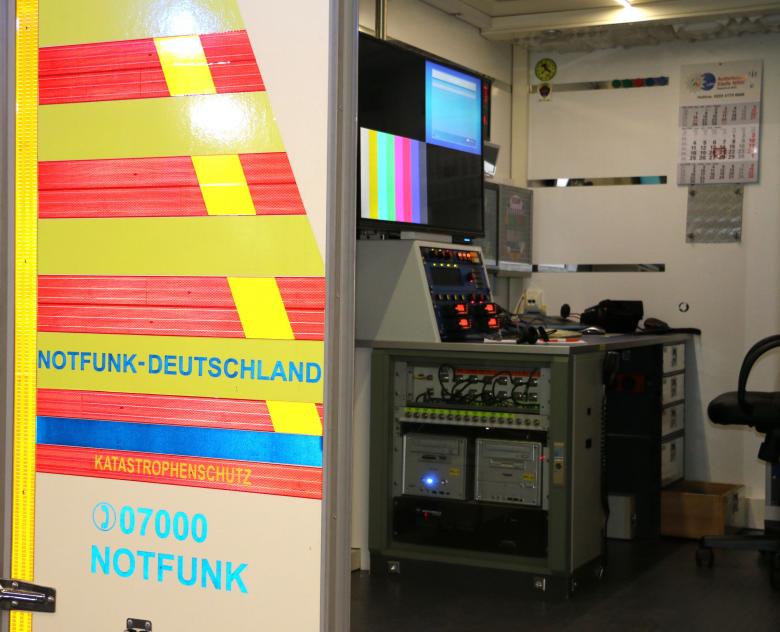
Fully equipped trailer for emergency communication from German radio amateurs.

PMR Expo Cologne is a professional trade fair, at global level with equipment that is also used by radio amateurs.
Important exhibition
PMR Expo Cologne hosted more than 230 European and international exhibitors, from all continents.
The internationalisation of PMR Expo resulted in a record number of more than 4.600 visitors, with a strong increase of visitors from outside Europe.
Many visitors have excellent technical knowledge which is growing steadily, both in quality and quantity.
For the first time a dedicated space was reserved for start-up businesses.
More than ever before, PMR Expo is the leading trade fair in Europe for secure communication.
Of vital importance
The police, fire brigade and emergency services cannot function properly without reliable telecommunications.
This became clear when we visited the stands of various professional manufacturers during the PMR Expo.
We learned from an exhibitor, that in Germany, the emergency services make more than 50 million secure calls and establish connections via 4.800 base stations every month. They also cover 99.50 % of German territory.
In Belgium it is the ASTRID network which offers these services.
German radio amateurs
It was nice to meet with the German radio amateurs again who, like previous years set up their stand there.
They showed their trailer, fully equipped with everything that is useful in the event of disasters.
DL1ITU/KX4FT Rüdiger Stingel and his friends, showed the visitors what Notfunk Deutschland and Katastrophenshutz mean.
Equipment operating on the LTE network, the DAPNET a UHF paging network of radio amateurs and of course the DMR repeaters connected to Brandmeister.
An exchange of views was held on a possible extension of the DAPNET in Belgium.
Such an emergency service network is a generally accepted idea in Germany.
Hybrid with more options
The ideal situation is a combination of narrowband digital TETRA with a broadband POC-radio.
POC or Push-to-talk On Cellular was totally unused until 2 years ago.
In many countries, POC became almost indispensable for emergency communication.
Wireless digital connections for the emergency services are typically narrow-banded.
Broadband alongside 4G introduces the possibility of live exchanges of all kinds of data, including footage from body cams and localisation data.
Amateurs frequently use free apps such as Echo Link, Zello and Team Speak.
Also present at PMR-Expo was Real-PTT, which offers its services by means of servers, which it operates globally and charges 12 US Dollars for an annual subscription.
BOXCHIP S900A Plus
The ultimate, recently introduced, hybrid device for certain emergency services and radio amateurs is the Boxchip S900A Plus.
It works in both analogue and digital mode and is available in VHF or UHF versions.
This all-rounder runs on Android 9.0+. It is also a real smartphone.
One very interesting feature of this device is that it establishes an internet connection with the Brandmeister network.
A complete overview of available DMR repeaters is always available.
The Boxchip is also a gateway between the POC internet connection and DMR and works in both directions.
The device can also be used as a hotspot to give other devices access to the internet.
The best of both technologies combined in a beautiful device.
Specifications S900A Plus
Android 9.0+ operating system
1000 channels
TX-optionally 1 or 2 watts.
RX analogue -121dBm, digital -117dBm.
TDMA – 2 slots
Encryption – ARC4 / AES128 / AES256
Battery – 4.500 mAh
Wi-Fi – 2.4 GHz and 5.8 GHz
GPS and Bluetooth
Camera - 5 MP / 8 MP + possibility to connect bodycam
Highlight Flash
Certificates – CE / FCC / MIL810G / MSDS / UN38.3
EU Version – LTE bands B1 / B3 / B5 / B7 / B8 / B20 / B26 / B28A / B28B
Total weight 375 g
PMR Expo Cologne hosted more than 230 European and international exhibitors, from all continents.
The internationalisation of PMR Expo resulted in a record number of more than 4.600 visitors, with a strong increase of visitors from outside Europe.
Many visitors have excellent technical knowledge which is growing steadily, both in quality and quantity.
For the first time a dedicated space was reserved for start-up businesses.
More than ever before, PMR Expo is the leading trade fair in Europe for secure communication.
Of vital importance
The police, fire brigade and emergency services cannot function properly without reliable telecommunications.
This became clear when we visited the stands of various professional manufacturers during the PMR Expo.
We learned from an exhibitor, that in Germany, the emergency services make more than 50 million secure calls and establish connections via 4.800 base stations every month. They also cover 99.50 % of German territory.
In Belgium it is the ASTRID network which offers these services.
German radio amateurs
It was nice to meet with the German radio amateurs again who, like previous years set up their stand there.
They showed their trailer, fully equipped with everything that is useful in the event of disasters.
DL1ITU/KX4FT Rüdiger Stingel and his friends, showed the visitors what Notfunk Deutschland and Katastrophenshutz mean.
Equipment operating on the LTE network, the DAPNET a UHF paging network of radio amateurs and of course the DMR repeaters connected to Brandmeister.
An exchange of views was held on a possible extension of the DAPNET in Belgium.
Such an emergency service network is a generally accepted idea in Germany.
Hybrid with more options
The ideal situation is a combination of narrowband digital TETRA with a broadband POC-radio.
POC or Push-to-talk On Cellular was totally unused until 2 years ago.
In many countries, POC became almost indispensable for emergency communication.
Wireless digital connections for the emergency services are typically narrow-banded.
Broadband alongside 4G introduces the possibility of live exchanges of all kinds of data, including footage from body cams and localisation data.
Amateurs frequently use free apps such as Echo Link, Zello and Team Speak.
Also present at PMR-Expo was Real-PTT, which offers its services by means of servers, which it operates globally and charges 12 US Dollars for an annual subscription.
BOXCHIP S900A Plus
The ultimate, recently introduced, hybrid device for certain emergency services and radio amateurs is the Boxchip S900A Plus.
It works in both analogue and digital mode and is available in VHF or UHF versions.
This all-rounder runs on Android 9.0+. It is also a real smartphone.
One very interesting feature of this device is that it establishes an internet connection with the Brandmeister network.
A complete overview of available DMR repeaters is always available.
The Boxchip is also a gateway between the POC internet connection and DMR and works in both directions.
The device can also be used as a hotspot to give other devices access to the internet.
The best of both technologies combined in a beautiful device.
Specifications S900A Plus
Android 9.0+ operating system
1000 channels
TX-optionally 1 or 2 watts.
RX analogue -121dBm, digital -117dBm.
TDMA – 2 slots
Encryption – ARC4 / AES128 / AES256
Battery – 4.500 mAh
Wi-Fi – 2.4 GHz and 5.8 GHz
GPS and Bluetooth
Camera - 5 MP / 8 MP + possibility to connect bodycam
Highlight Flash
Certificates – CE / FCC / MIL810G / MSDS / UN38.3
EU Version – LTE bands B1 / B3 / B5 / B7 / B8 / B20 / B26 / B28A / B28B
Total weight 375 g

Ella from Boxchip with the new S900A Plus, sophisticated complete device with unexpected possibilities.

Rüdiger Stinger and his team of radio amateurs showed the telecom professionals in Cologne that radio amateurs are very passionate and competent.

Fully equipped trailer for emergency communication from German radio amateurs.

PMR Expo Cologne is a professional trade fair, at global level with equipment that is also used by radio amateurs.
Een nieuwe bril voor een nieuwe zonnecyclus
25-12-2019
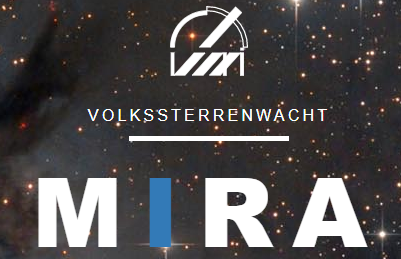 Op vrijdag 27 december om 20 u is er in de volkssterrenwacht Mira (Grimbergen) de lezing "Een nieuwe bril voor een nieuwe zonnecyclus" door ruimteweervoorspeller Jan Janssens van het KMI. In deze lezing wordt onder andere ingegaan op de nieuwe zonnecyclus die voor de deur staat en wat er zoal verwacht wordt aan zonneactiviteit de komende jaren.
Op vrijdag 27 december om 20 u is er in de volkssterrenwacht Mira (Grimbergen) de lezing "Een nieuwe bril voor een nieuwe zonnecyclus" door ruimteweervoorspeller Jan Janssens van het KMI. In deze lezing wordt onder andere ingegaan op de nieuwe zonnecyclus die voor de deur staat en wat er zoal verwacht wordt aan zonneactiviteit de komende jaren.
Meer informatie vind je op de website van Mira.
 Op vrijdag 27 december om 20 u is er in de volkssterrenwacht Mira (Grimbergen) de lezing "Een nieuwe bril voor een nieuwe zonnecyclus" door ruimteweervoorspeller Jan Janssens van het KMI. In deze lezing wordt onder andere ingegaan op de nieuwe zonnecyclus die voor de deur staat en wat er zoal verwacht wordt aan zonneactiviteit de komende jaren.
Op vrijdag 27 december om 20 u is er in de volkssterrenwacht Mira (Grimbergen) de lezing "Een nieuwe bril voor een nieuwe zonnecyclus" door ruimteweervoorspeller Jan Janssens van het KMI. In deze lezing wordt onder andere ingegaan op de nieuwe zonnecyclus die voor de deur staat en wat er zoal verwacht wordt aan zonneactiviteit de komende jaren.Meer informatie vind je op de website van Mira.
De CQ-QSO van januari-februari 2020 is online
26-12-2019
De nieuwe CQ-QSO (01-02/2020) is online.
Uit de inhoudsopgave:
UBA News
Technical Info
HF
Varia
Agenda
Enjoy!
Uit de inhoudsopgave:
UBA News
- Nieuwjaarswensen van de voorzitter ON7TK
- 5G wijzigt ingrijpend de telecommunicatie
- PMR-Expo Keulen
- Convergentie en hybride systemen
Technical Info
- Arduino voor Radioamateurs (deel 5)
- Een ’magnetic loop’ antenne – QRP
- Hotspot DMR (deel 1)
HF
- Contest Calendar
- Steeds meer en meer landen krijgen toegang tot de 60m band
- Ik ga op reis en ik neem mee...
Varia
- IARUMS meldt storingen door een over-the-horizon radar (OTHR) uit Rusland
- Verslag van de Wetenschapsdag 2019 door secties MWV en KTK
- LX9S – JOTA/JOTI ervaringen in Luxemburg
- Special Event Station PA75OV actief in 2020
Agenda
Enjoy!



